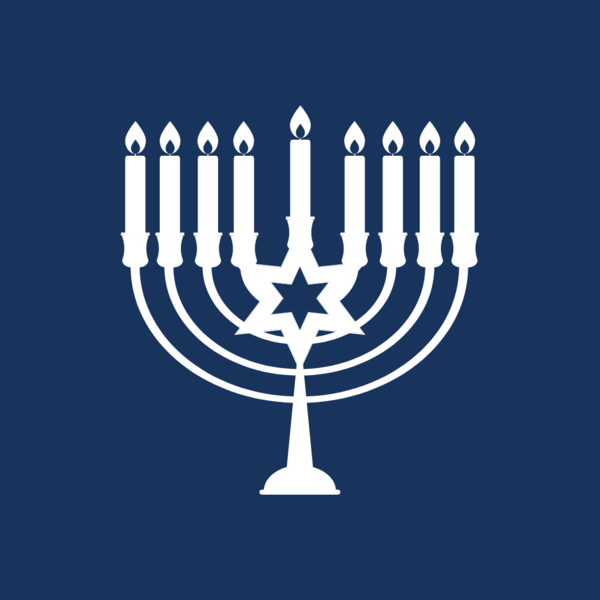What is the message conveyed by the light of the Chanukkah candles? Here's how Maimonides, the great medieval scholar of Jewish law and philosophy, presents it:
מִצְוַת נֵר חֲנֻכָּה מִצְוָה חֲבִיבָה הִיא עַד מְאֹד וְצָרִיךְ אָדָם לְהִזָּהֵר בָּהּ כְּדֵי לְהוֹדִיעַ הַנֵּס...
The mitzvah of the Hanukkah candle is an extremely precious one. And one must be careful with it, to publicize the miracle...
On Chanukkah, there is a mitzvah to perform what is called "pirsumei nisa," publicizing the miracle of the holiday, by lighting the candles. This idea of spreading the word about a miracle comes up on two other holidays as well: On Purim, it is the reason given for reading the Book of Esther, and on Passover, it is the explanation for drinking four cups of wine.
Who is the audience for this message? On Passover, the word gets around the seder table. On Purim, the community comes together to hear the story of Esther. What about on Chanukkah? Who are the candles for?
וכבתה אין זקוק לה ורמינהו מצותה משתשקע החמה עד שתכלה רגל מן השוק מאי לאו דאי כבתה הדר מדליק לה לא דאי לא אדליק מדליק ואי נמי לשיעורה: עד שתכלה רגל מן השוק ועד כמה אמר רבה בר בר חנה אמר רבי יוחנן עד דכליא ריגלא דתרמודאי:
The mitzva of kindling the Hanukkah lights is from sunset until traffic in the marketplace ceases...Until when exactly is this time? Rabba bar bar Ḥana said that Rabbi Yoḥanan said: Until the traffic of the people of Tadmor [tarmoda’ei] ceases. They sold kindling wood and remained in the marketplace later than everyone else. People who discovered at sunset that they had exhausted their wood supply could purchase wood from them.
The Talmud tells us that one can light anytime from sunset until everyone is home and the streets are empty. Some interpreters read this description of the stragglers as being about another nation - non-Jews - who were usually the last to leave the marketplace. It seems that the audience for candlelighting can and should be anyone and everyone.
In fact, Maimonides writes that if you are the only one who sees the Chanukkah candles, and everyone else just thinks you are standing there holding some candles so you can see in the dark, you haven't fulfilled the mitzvah of candlelighting!
אָחַז הַנֵּר בְּיָדוֹ וְעָמַד לֹא עָשָׂה כְּלוּם שֶׁהָרוֹאֶה אוֹמֵר לְצָרְכּוֹ הוּא עוֹמֵד...
One who held the lamp in his hand and stands has not done anything; for the viewer will say he is standing for his needs...
On the other hand...
תנו רבנן נר חנוכה מצוה להניחה על פתח ביתו מבחוץ אם היה דר בעלייה מניחה בחלון הסמוכה לרשות הרבים ובשעת הסכנה מניחה על שלחנו ודיו
The Sages taught in a baraita: It is a mitzva to place the Hanukkah lamp at the entrance to one’s house on the outside, so that all can see it. If one lived upstairs, they place it at the window adjacent to the public domain. And in a time of danger, when the gentiles issued decrees to prohibit kindling lights, they place it on the table and that is sufficient to fulfill their obligation.
Even though the Talmud tells us to light outside, in the dark, where everyone can see it, we are also told that if it is dangerous to do so, you can light indoors, and that fulfills the obligation. There are lots of reasons why one might not be able to show off the candlelight to everyone, and it turns out in a pinch, just you and your family seeing the candles might be enough.

- What do you think we accomplish by lighting Chanukkah candles? What message are we communicating?
- Who do you think this message is designed for? Who needs to see those lights?




